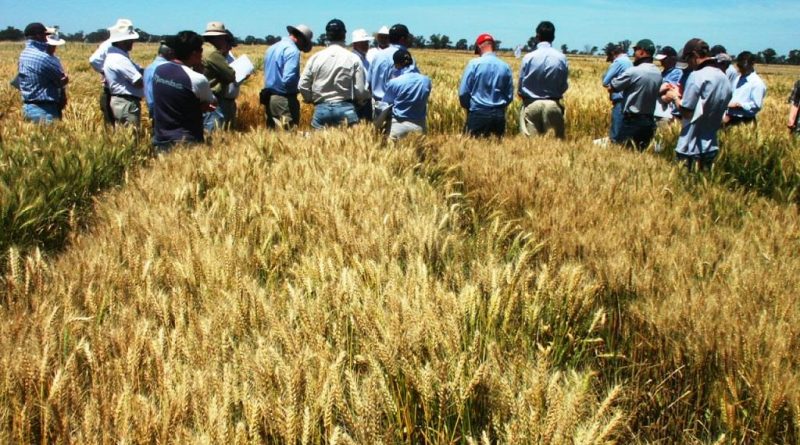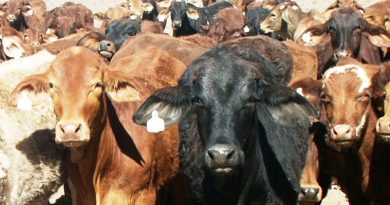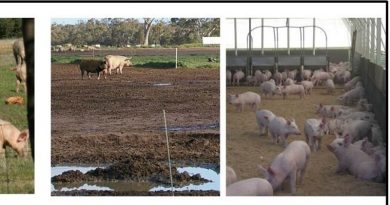Regenerative agriculture’s version of science creates division between farmers
In part two of a series on regenerative agriculture Patrick Francis examines why the concept is creating unnecessary divisions amongst Australia’s broadacre farmers.
The issues emerging for advocates of regenerative agriculture in its broadest sense are starting to be exposed by agricultural scientists who feel decades of research and extension are being unscientifically criticised for lacking relevance to soil health and other ecosystem functions and food safety. It’s as though agricultural science only supports industrial agriculture and ignores ecosystem functions associated with food production and human nutrition.
There are four key issues:
Firstly it has become the mantra for a farm practice ideology associated with what Charles Massy referred to as “moral and ethical connotations” as well as farm practice change. Some of its champions completely reject farming inputs and practices such as herbicides in particular glyphosate, chemical fertilisers, monoculture crops, livestock feedlots and large scale family and corporate farming. They contend that these practices and inputs are not only degrading farm ecosystem functions and destroying rural social cohesion, but are also poisoning the human food supply causing all sorts of harm.
A classic example of how this misleading focus is being portrayed to consumers by regenerative agriculture (RA) advocates is found on the Patagonia clothing website. The business has ventured into selling food on line under the banner Patagonia Provisions. In differentiating the way its foods are produced Patagonia Provisions makes emotive and negative generalisations about conventional farming as if every non RA labelled farmer involved around the world is an ecosystem degrader.
“We overgraze our prairies, fill our livestock with antibiotics, and drain fossil aquifers to water unsustainable crops. Chemicals reign supreme to maximize production, and the unknown impact of genetically modified organisms hovers over the entire industry. In short, our food chain is broken. Patagonia Provisions is about finding solutions to repair the chain.” The company believes that “our food can and should be a part of the solution to the environmental crisis – grown, harvested and produced in ways that restore our land, water and wildlife” via regenerative agriculture and regenerative grazing.
Once a farming methodology becomes ideology for an individual or business, science or proof is no longer relevant to their perspectives. This seems to be the situation for many of the regenerative agriculture champions and it is the concept’s most significant impediment. That’s because for practice change to take place farmers like any group of people need good will and understanding, not broad, anecdotal criticisms and accusations of their practices and beliefs. Most professional farmers are constantly changing management based on a wide variety of complex considerations which impact the rate of adoption.
A recent US study into changing climate change deniers views has a lesson for the approach needed by ideological based RA champions towards conventional/industrial farmers. The researchers from Stanford’s School of Earth, Energy & Environmental Sciences concluded that to sway the opinion of climate deniers, start by acknowledging and respecting people’s beliefs.
“We should not try to ignore who people are, but rather acknowledge their views so that they can be dealt with and the conversation can move on to behavioral changes — such as finding solutions that match their values and do not threaten a person’s sense of identity or quality of life,” said Gabrielle Wong-Parodi, an assistant professor of Earth system science.
The NESP-EP farm profitability and biodiversity report (see article 1 in this regenerative agriculture series) added to the division developing in farming methodology. Amongst its conclusions is the statement that the study’s “…findings verify the claim that some graziers are able to be profitable whilst maintaining and enhancing the biodiversity on their properties and suggests that they have a set of management capabilities, different to other producers that creates these outcomes.”
Whether or not most farmers who have adopted regenerative agriculture practices generally agree they have superior management capabilities or higher “moral and ethical connotations” has not been tested through social research.
Secondly, many of its champions suggest adoption of regenerative agriculture practices produces positive outcomes for on-farm ecosystem functions, production and profitability that are not scientifically or statistically proven. Regen WA and Soils for Life are building portfolios of RA farmer case studies which are posted on their web sites. Most of these contain anecdotal evidence from owners but little if any data trends on characteristics such soil health, and food quality are supplied to back statement made.
As well, the generalisations made about achievable outcomes are so broad that they are often irrelevant at an individual farm level due to variations in soil types, rainfall amount and seasonality, past farming practice, present farming practice and business financial situation.
There is seldom any mention of regional quantifiable guidelines which can sustain or improve paddock ecosystem functions. If there were then farmers might have a practical understanding of what is expected if using either method.
The classic example in grazing management is quantifying the level of ground cover considered “best practice” for protecting soil from damage to its water holding capacity, its soil food web (biology and biodiversity), and its soil carbon irrespective of rainfall. In southern Australia (and possibly in rangeland areas) it is recognised that grazing management that ensures a minimum 70% pasture cover with plant crowns and litter and a minimum 1200kg of dry matter herbage 365 days a year is required to maintain a long-term, climate resilient, productive livestock grazing ecosystems.
No one farming methodology, ideology or science has a stranglehold on achieving these quantifiable outcomes. However, agricultural science based research determined the critical minimum figures (see Sustainable Grazing Systems research from the early 2000’s) and published them widely for any farmer to adopt.
Soil for Life has recognised the lack of scientific credibility associated with practices participating farmers contend are producing ecosystem function and productivity improvements. In its October 2019 newsletter it included an article by University of Melbourne Associate Professor Robert White which posed the question why regenerative agriculturalists and soil scientists often clash when both parties want the same soil health outcomes (This article is published in full on the Moffitts Farm web site).
In its November 2019 newsletter Soils for Life CEO Rod Chisholm highlighted how the organisation is taking steps to collaborate with agricultural scientists so it can “… upgrade the scientific content of our case studies.”
“October saw agricultural science taking the dominant role on the Soils for Life agenda. We have consolidated our working relationships with the High-Performance Soils Cooperative Research Centre (Soils CRC), the Australian National University, the Soils Division of the CSIRO in both Adelaide and Canberra, the NSW Government Department of Primary Industry, … South Australia’s Dept of Primary Industry and Regions and WA’s Department of Primary Industry and Regional Development,” Chisholm wrote.
Thirdly, there is a general assumption that conventional agriculture which could also be described as agricultural science based farming, continually degrades farm ecosystem functions. This assumption is based on a belief that agricultural science research and extension has ignored improving farm ecosystem functions in the quest for higher productivity per hectare and higher profit per hectare. This assumption is constantly supported by references to historical impacts of “European” cropping practice in Australia, particularly ploughing’s impact on soil carbon decline and associated soil health decline and erosion.
The fact that most crop farmers no longer plough their paddocks, (figure 6A and 6B in article 1), is not mentioned, nor is it noted that the benefits of no-till farming has multiple paddock ecosystem function benefits as well as reducing machinery greenhouse gas emissions associated with ploughing paddocks.
Fourthly, some of RA champions contend that all farmers not practicing the methodologies they advocate are responsible for increasing human diseases. They blame this on the use of chemical fertilisers, herbicides, insecticides.
Why was clearly outlined by Walter Jehne in a radio 3CR interview in 2019 reproduced on the Soils for Life web page. “Over the last 60 – 70 years, we’ve had an explosion of a whole range of self-induced diseases. These are diseases which are really our biochemistry malfunctioning. And that includes the cancers, the cardiac heart diseases, the autoimmune, attention deficit (disorders), allergy reactions. But these are all diseases that directly relate to what we put into our bodies through our food. And if the nutritional integrity of that food is compromised, by definition, so is our biochemistry, and so is our preventative health. We’ve had this massive exponential explosion, where two-thirds of the community globally are now either obese or malnourished. And that’s all related to the lack of nutritional integrity of our food, and how we’ve destroyed that through agriculture.”
Given humans in developed and developing countries are living longer than ever before (60 years in 1970 and 72 years in 2017), that malnutrition affects a lower percentage of people than ever before (28% in 1970 and 11% in 2015), and the main cause of malnutrition is disruption of food supplies in conflict zones, particularly in the Middle East and Africa, the assertion that food’s nutritional integrity is so bad because of conventional farming inputs suggests that ideology rather than science is behind the assertions.
This was demonstrated by a RA champion who stated in an on-line seminar that “minerals in food has declined by 60 – 80%” since 1940 referring to their content in milk, meat and vegetables farmed under conventional management. Best practice agricultural science based farming advocates fertiliser applications, be they organic or inorganic, are based on annual nutrient budgets. This ensures minerals exported off farm in meat, grains, vegetables, milk etc are compensated with imported minerals in applied fertilisers to ensure the nutritional requirements of food crops or pastures which livestock eat are maintained.
Where food nutritional content differences between organic and conventional livestock farming are identified they usually compare different feeding methods particularly pasture fed versus grain fed. Because organic livestock production is mostly pasture/forage based most food composition research compares this method against grain fed beef and dairy production. There can be differences in meat and milk composition between these two systems, but it is usually not in mineral content but in particular fatty acids.
This was highlighted in a 2016 British Journal of Nutrition research paper by Dominika Średnicka-Tober et al who undertook a literature review of 67 European published studies investigating composition differences between organic and conventional meat. It found “For many nutritionally relevant compounds (e.g. minerals, antioxidants and most individual fatty acids (FA)), the evidence base was too weak for meaningful meta-analyses(to demonstrate any significant differences between organic and conventionally grown meat). However, significant differences in FA profiles were detected when data from all livestock species were pooled. …Evidence from controlled experimental studies indicates that the high grazing/forage-based diets prescribed under organic farming standards may be the main reason for differences in FA profiles.”

Figure 1: Scientific research suggests there is unlikely to be any compositional difference between grass finished beef produced under an organic certification program (top) using organic fertilisers and the same beef finished using conventional pasture fertilisers (bottom). What may differ is their healthy fatty acids concentration which is influenced to a large extent by the percentage of legumes in the pasture, not the farming methodology.
This review highlighted there are so many variables impacting meats composition differences that trying to allocate them to organic versus conventional production impacts is exceedingly difficult and as yet has not been achieved. Importantly this review failed to identify that some conventional meat production particularly with ruminants is often pasture based as happens in Australia. In studies where organic and conventional pasture based ruminant livestock finishing happens side by side an important forage variable which impacts meat milk fatty acid profiles is the percentage of legumes in the pasture. The higher the legume content the higher the healthy fatty acids content.
In Australia conventional livestock grazing management with high pasture utilisation percentage and addition of phosphorus fertilisers encourages a pasture legume content between 20% and 40% comprising, depending on soil pH and seasonal rainfall, sub clovers, medics, and perennial clovers. In contrast holistic grazing with its long rest between grazings, limited (if any) use of phosphorus fertilisers and emphasis on increasing perennial plant species content encourages low legume species percentage and grass dominance.
There is an important anomaly to consider with pasture legume content above around 10%. On the one hand high legume content pasture improves desirable meat fatty acid percentage, but on the other hand it can be disasterous for paddock ecosystem resilience. That’s because the most common legumes are annual sub clovers and medics and if they comprise more than 20% of pasture content during the growing season and are consumed in late spring or harvested in hay or silage, they leave paddock surfaces bare throughout late spring, summer and autumn until the seasonal break (figure 2A). The bare surfaces often lead to soil and nutrient losses from wind and water (thunderstorms) erosion a problem being exacerbated by more variable rainfall and longer dry periods due to climate change (figure 2B).
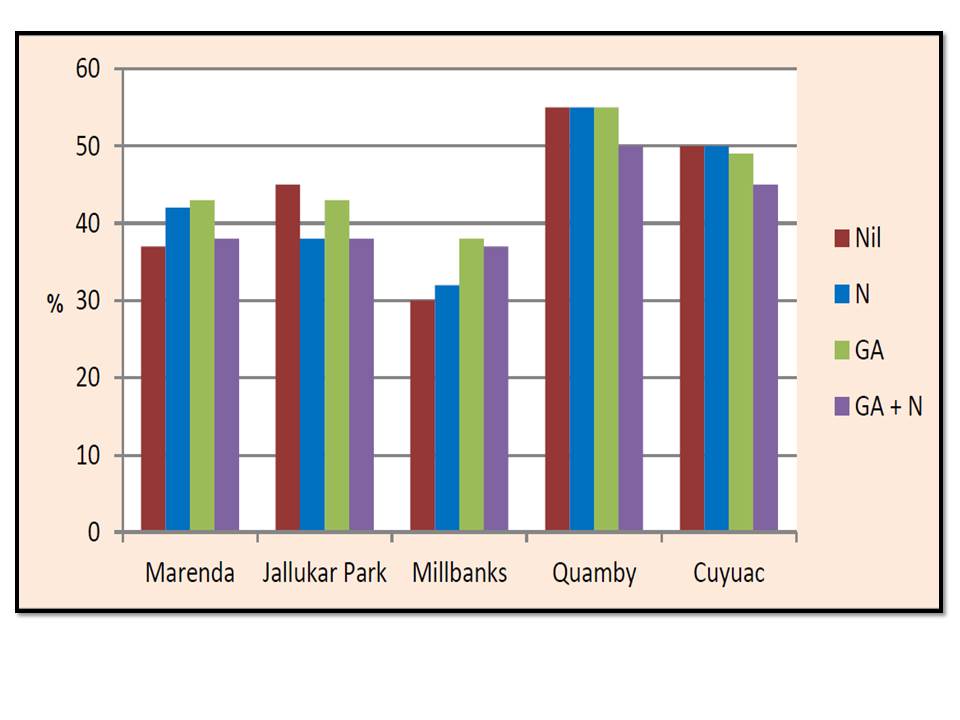
The other important anomaly associated with high annual legume content in pastures is their inability to recover nutrients from deeper down the soil profile because they have short root systems. While legumes add nitrogen to the soil through symbiotic rhizobium bacteria on their roots, they need moderate to high levels of inorganic (plant available) phosphorous supplementation and trace elements like molybdenum to grow successfully. Much of the phosphorous applied annually (generally around 70%) in fertiliser is adsorbed onto soil particles and because of the lack of plant cover in summer/autumn has the potential to be lost in soil erosion and water leaching.
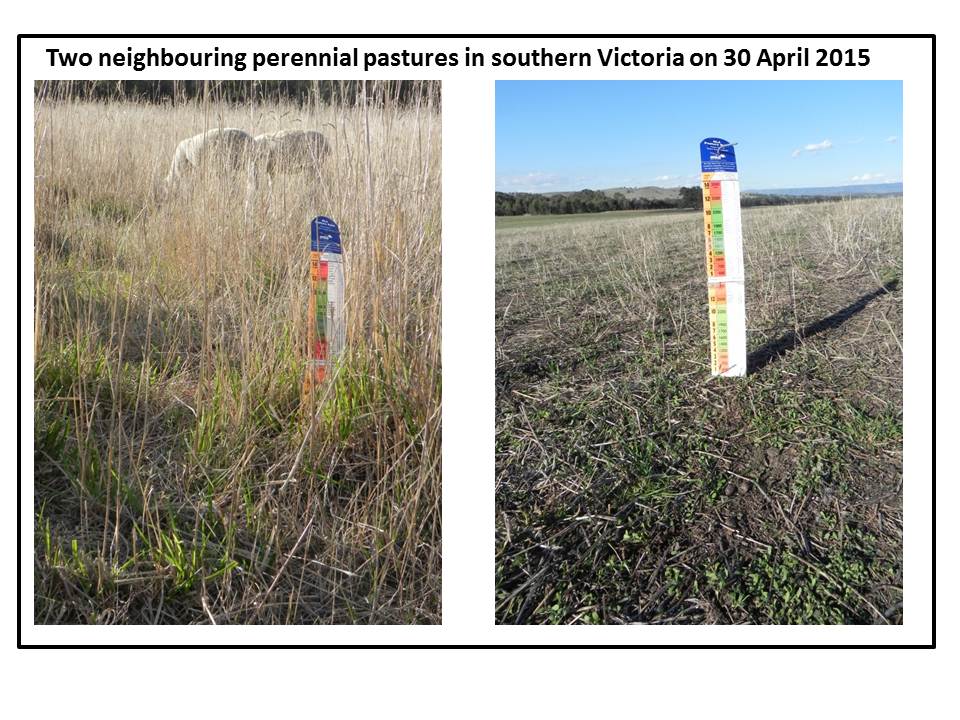
Figure 2 B: High annual legume pasture composition (right) is a two edged sword for both organic and conventional farmers because while it can increase the desirable fatty acid composition in ruminant meat it leaves pastures vulnerable to increased ecosystem degradation compared to high perennial grass composition (above 80%) under holistic grazing management (left).
The pasture legume story highlights the complexity associated with farming systems and the danger of drawing general conclusions about one farming methodology being superior, across farm ecosystem functions, animal production, animal welfare, business profitability, food nutrient content, and human health, than another because there are so many variables involved.
Even with grains the assertion that mineral content is decreasing due to more intensive farming methods involving chemical fertilisers and pesticides is incorrect. This is being demonstrated in the world’s longest running wheat yield and mineral compostion trial known as the Broadbalk Experiment in Rothemstead England. This trial has been running since 1845 and compares wheat yield and grain mineral composition in the same varieties fertilised with farm yard manure (FYM), chemical fertilisers (N2PKNaMgS), and a no fertiliser (control), figure 1.
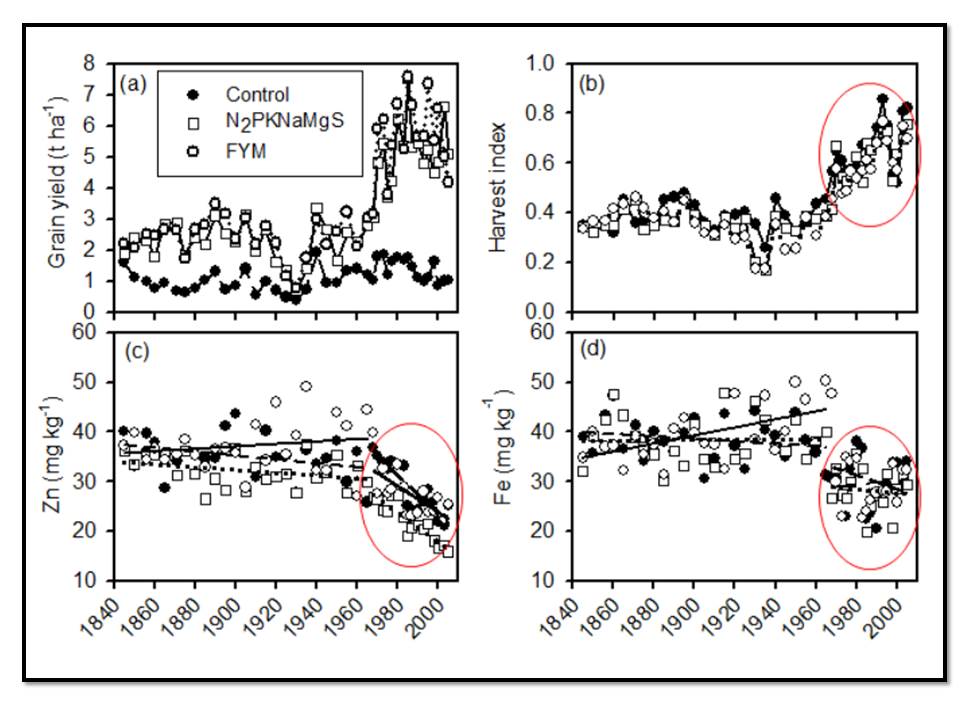
Figure 3 : Broadbalk experiment in England has been comparing wheat yield and zinc and iron concentrations versus organic and inorganic fertiliser applications from 1845 to present. Source: Fan et al, J Trace Elements Medicine Biology 22 (2008) 315 – 324.
A recent review of the data by Professors Steve McGrath and Peter Shewry found that while two important human health minerals in wheat, zinc (Zn) and iron (Fe) have declined since the 1960’s the cause has not been due to the farming method as characterised by the inputs used – natural versus chemical. The reason is the change to semi-dwarf high yield varieties introduced to help feed the world’s growing population.
“Looking at the Broadbalk study, you see similar trends of declining wheat nutrients in different treatments, whether they’ve received no fertilizers, inorganic fertilizers or organic manure. We can say definitively soil nutrient levels are not the cause,” McGrath says.
Changes to soil biology as a result of different fertilisers is also not considered the cause. “The crop composition in treatments with high nutrient additions (FYM and chemical) has declined in the same way as that in the no fertiliser (control) treatment”.
The scientists contend that the mineral content decline is due to “yield dilution” in higher yielding semi-dwarf wheat and other modern crops.
“These varieties produce bigger and more grains, but that means an increased amount of starch – which dilutes other grain components including minerals. We have shown that semi-dwarf wheats also contain less minerals even when grown under the same conditions side by side with the old varieties. This demonstrates that is clearly a genetic effect and not due to environmental factors,” Shewry says.
The scientists warn about reaching conclusions on food nutritional composition differences without strong scientific evidence.
“It is important to compare samples grown in controlled and replicated field trials and analysed using the same methods. There are very few studies in which this has been done. The best evidence is our work on wheat from the Broadbalk experiment, which spans 175 years. No really good, controlled experimental studies on other staple crops or vegetables exist.”
Regenerative agriculture medicos
Human health advocacy by regenerative agriculture champions is an emotive and often compelling argument used to support their methodologies. Some advocates have emerged amongst medical practioners especially in the US. These doctors make the same assertions as the champions.
Dr Joseph Mercola has a clinic in Illanois and promotes regenerative agriculture as the way of getting out of the industrial farming mess. “Numerous farms around the world have started switching to regenerative agriculture, which gives us hope that we’re not entirely on the road to destruction. Regenerative agriculture focuses on helping the environment heal from years and years of human abuse. It aims to bring back to the soil what has been depleted, which means that we’re getting back the minerals and nutrients that we are supposed to be getting.”
Mercola has a strong commercial interest in promoting RA, his anti-conventional agriculture views support natural products available from his on-line shop. Products include supplements, food & drinks, personal care, clothing, healthy home and pets.
Another US medical practioner advocate for regenerative agriculture is Dr Zac Bush. He was to be a guest speaker at the now postponed RCS 30 years conference in July 2020. According to RCS “Dr Bush is one of the few medical practitioners to fully understand the relationship between soil health and human health, and is working tirelessly to promote farmers regenerating landscapes to produce healthy food for a healthy planet.”
Bush contends that increasing use of the herbicide glyphosate and other toxins in conventional farming over the last 25 is related to “… the most profound explosion of chronic disease in human history. The answer is Regenerative Agriculture,” he writes on his web site.
As well as treating patients in his clinic and guest speaking appearances this charismatic medico offers a range of on-line workshops and on-line shopping. His most prominent product is ION*Gut Health which is described as “a gut-strengthening, brain-boosting mineral supplement sourced from 60-million-year-old soil that naturally supports your microbiome and defends against toxins such as glyphosate. It goes beyond the scope of probiotics to support gut health, mental clarity, and immune function.” It comes in versions for adults, children and pets.
Bush contends ION*Gut Health should be part of every person’s health program even those who only eat and drink certified organic foods which are not grown with glyphosate. He claims glyphosate and other chemicals used in industrial farming are unavoidable as they can be found in the air and water as well as conventional food. Hence the claim “Think of ION*Gut Health as the missing piece in the human health puzzle – the way to get closer with nature and reject toxicity’s advances.”
Bush has taken his advocacy for regenerative farming a step further than other medicos by establishing Farmers Footprint. He describes this as “a coalition of farmers, educators, doctors, scientists, and business leaders aiming to expose the human and environmental impacts of chemical farming and offer a path forward through regenerative agricultural practices. In partnership with regional and international leaders in the regenerative agriculture movement, Farmer’s Footprint is raising the bar and providing a path for consumers, corporations, and governments to participate in a healthier future for our children and planet.”
Conclusion
Once again division is being created between regenerative agriculture farmers judged by some as looking after a healthier ecosystem and food future and the majority of farmers judged as not caring and degrading their farm ecosystems and growing unhealthy foods. There is no recognition by some regenerative agriculture champions for any of the tens of thousands of programs developed over the last 40 years by scientists and farmers around the world which have produced positive outcomes for cropping and grazing ecosystems, food safety and availability, and animal productivity and welfare apart from the “path forward through regenerative agricultural practices.” The fact that many of these management practices are in common use and have been for decades seems to be irrelevant to many regenerative agriculture promoters.
References:
- Composition differences between organic and conventional meat: a systematic literature review and meta-analysis, by Dominika Średnicka-Tober et al, British Journal of Nutrition, Volume 115, Issue 6, 28 March 2016.
Fact or fake news: is our food becoming less nutritious? By Professors Steve McGrath and Peter Shewry, Rothamstead Research January 2020. https://www.rothamsted.ac.uk/articles/fact-or-fake-news-our-food-becoming-less-nutritious

